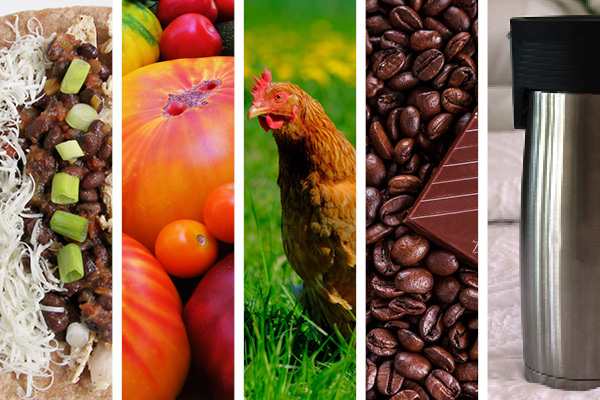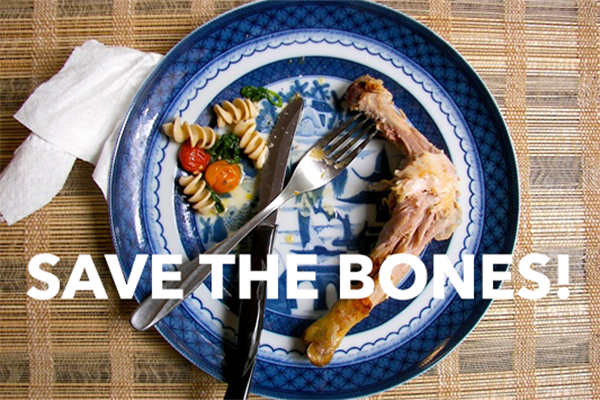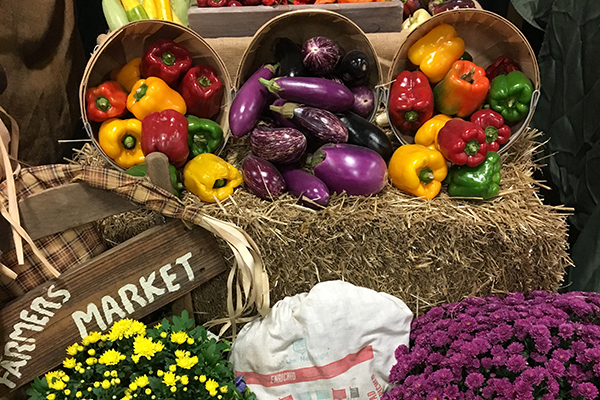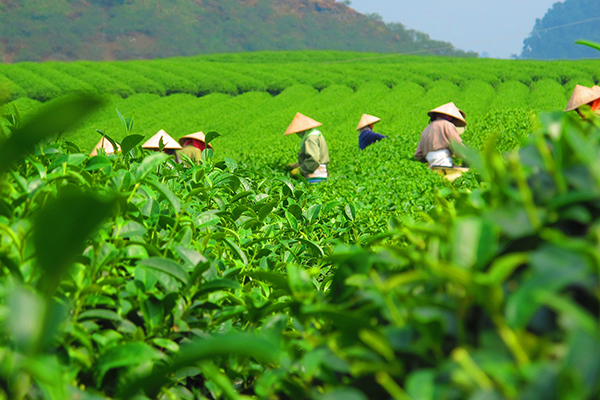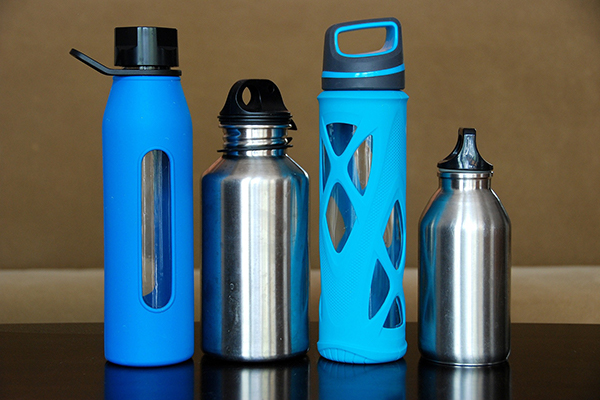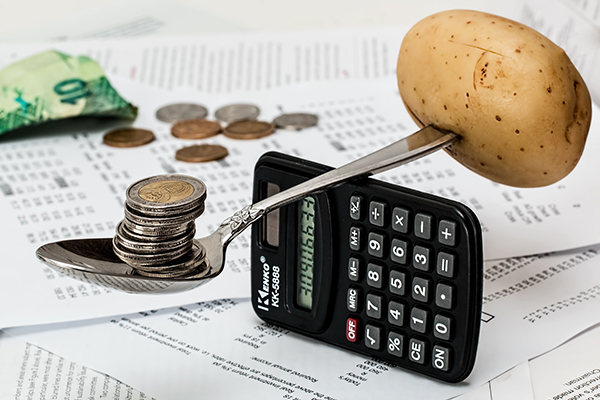Our food choices not only impact our health, they also have far-reaching impacts on our environment, economy and politics. Dining with the planet in mind can be a daunting task. Do what you can and remember that every small change adds up to big differences!
Start with something simple like using reusable glass containers instead of plastic baggies or ditching individual plastic water bottles. Then branch out as you feel comfortable and incorporate some of the other suggestions below.
Dining with the planet in mind can be daunting. Check out these #ecofriendly food choices to help your health and the environment. #earthday #saslife Click To Tweet1. Reduce food waste.
EARTH PROVIDES ENOUGH TO SATISFY EVERY MAN’S NEED, BUT NOT EVERY MAN’S GREED. – Ghandi
We waste A LOT of food…to the tune of more than 133 billion pounds each year in the U.S. alone. In addition to billions of dollars in wasted money, food waste is the 3rd biggest emitter of greenhouse gases on the planet. It’s a huge problem!
To help reduce food waste, plan your meals ahead of time and include leftovers in the rotation. Shop your fridge and pantry FIRST to see what needs to get eaten. Using what you already have on hand before buying more food is the MOST important step! Then when you go to the store, only buy what you need before it will go bad and stick to that meal plan you worked so hard creating. Just because something is on sale doesn’t mean it’s a good deal for you.
When you’re cooking, use everything- scraps and all. Embrace root-to-leaf cooking, freeze overly ripe fruit to use in smoothies or muffins later on, make a soup with less than stellar greens and veggies or keep a bag of scraps in the freezer to make homemade vegetable or bone broth. By using more whole-food ingredients, you’ll boost the nutritional content of the meals you’re making and cut back on processed food splurges when things run low.
For more ideas on reducing food waste, check out Top 5 Food Waste Solutions.
2. Shop local!
Produce in the grocery store travels an average of 1,500 miles to get to your plate. That’s basically the entire length of the U.S. east coast (New Hampshire to Miami). And we complain about taking a 2-mile jog; imagine how your broccoli feels!
Fruits and vegetables start to lose nutrients from the moment they are harvested. Therefore, the longer it takes to get to the grocery store and the longer you store it at home before eating it, the fewer vitamins and phytonutrients it will contain.
Purchasing and consuming produce and meats from your local community results in more nutritious and delicious foods, reduced air pollutants and less carbon emissions. Plus, it supports your local economy!
Find a farmers’ market near you, check out CSA options or try growing your own food.
3. Opt for good quality animal products.
IT’S NOT THE COW, IT’S THE HOW. – Russ Conser, Soil Carbon Cowboy
Meat itself really isn’t the problem; it’s how the animals were raised. On one end of the spectrum, there are industrial-sized livestock operations called Concentrated Animal Feeding Operations (CAFO’s) which are highly destructive to our health and the environment. They promote antibiotic resistance and deforestation, pollute the air and water ways and cause health issues for anyone living nearby.
On the other end of the spectrum, animals allowed to freely roam and eat as nature intended are beneficial to our health and the environment. These favorable living conditions result in foods with a higher nutritional value as well as lower risk of disease and antibiotic use in animals, conserve soil, reduce erosion and water pollution, increase carbon sequestration…and so much more.
As often as possible, choose grass-fed, pasture-raised and wild-caught animal products. Take a deeper dive into wild-caught and sustainable seafood here. Also look for certifications on the packaging such as Animal Welfare. As often as possible, choose grass-fed pasture-raised and wild-caught animal products Certified, Certified Humane, American Grassfed, Animal Welfare Approved and Certified Sustainable Seafood.
4. Enjoy sustainable coffee, tea and chocolate.
Most people aren’t aware of the inner workings of the coffee, tea and chocolate industries and how much social injustice (child labor, poor working conditions, inadequate pay), heavy use of pesticides and deforestation occurs.
Fairtrade products are sourced from small farmers and ensure fair wages were paid and favorable working conditions were provided. These companies are also required to invest a certain amount back into the local community where their ingredients were sourced. A win, win!
The next time you sit down to enjoy a nice cup of coffee or tea or indulge in a piece of decadent dark chocolate, think about where it came from and how it was produced. Look for certifications on the packaging such as Fair Trade, Rainforest Alliance and/or USDA Organic for help in choosing quality products. Take a closer look at sustainable coffee, tea and chocolate.
5. Limit single-use items.
Certain chemicals in plastics, even ones that are BPA-free, can leach into your foods and beverages and disrupt your endocrine system leading to health problems. This is an even bigger concern when plastics are subject to heat.
Plastic pollution is also a major concern worldwide. A 2015 study estimated that 8 million metric tons of plastic end up in our oceans each year. That’s equivalent to 5 grocery bags filled with plastic for every foot of coastline in the world. By 2025, this amount is expected to have doubled.
So instead of using plastic utensils, baggies and water bottles that you use once and then throw away, invest in reusable, eco-friendly options. It’ll help the environment, your health and your wallet in the long run!
Pick up an item here and there to help spread the initial investment out. This is a booming market, so there are TONS of great products to choose from. Ask a friend to recommend their favorite glass or stainless-steel water bottle, reusable grocery bag, food storage containers, travel coffee cup, etc. to help get you started.
Help! I’m on a budget.
Don’t let this list overwhelm you- mentally or financially. Again, start small and do one thing at a time versus diving in the deep end and attempting to tackle everything at once. This will make it much more sustainable and budget conscious. To help stay within a budget of any size:
- plan your meals ahead of time
- cook more at home
- eat less processed foods and meat
- eat more beans and lentils
- buy from the bulk bins (i.e. whole grains, beans, nuts, etc.)
- eat local and in season
- grow your own food.
Blueberry Oat Coconut Bites
Makes approximately 2 dozen bites
These totally plant-based tasty bites have a low carbon footprint and are no-bake, requiring no heat which bumps the sustainability factor even more!
PRINT RECIPE
Ingredients
1 cup rolled oats
1 cup frozen blueberries
1 Tbsp nut butter
⅓ cup unsweetened shredded coconut (plus more for coating if desired)
Directions
- Add oats, blueberries and nut butter to a food processor.
- Mix until combined and a thick paste has formed.
- Stir in coconut.
- Form into small bite-sized balls.
- Roll in extra coconut, if desired.
- Store in a sealed container in the fridge for up to a week, or in the freezer for an even longer shelf-life.
- Enjoy 1-2 bites for a snack or sweet treat.
